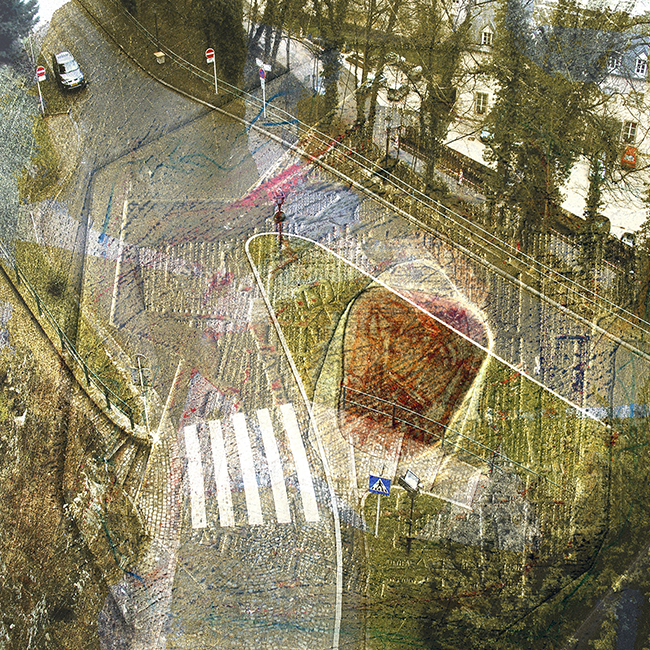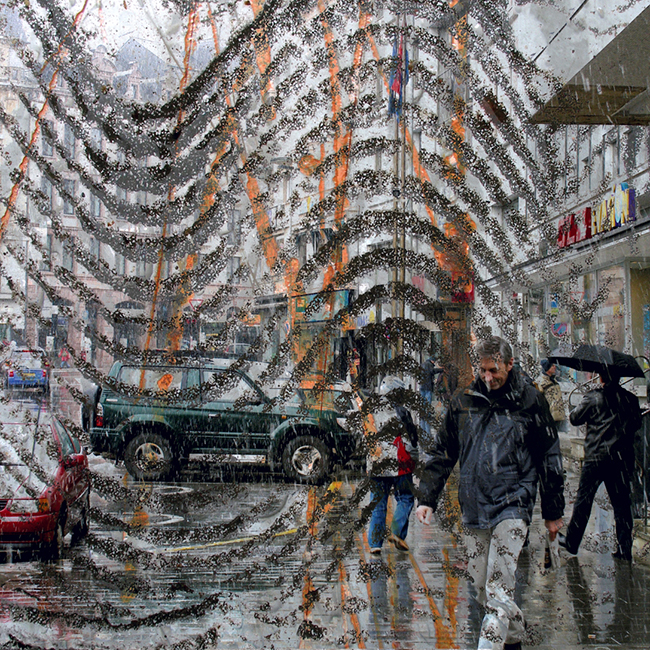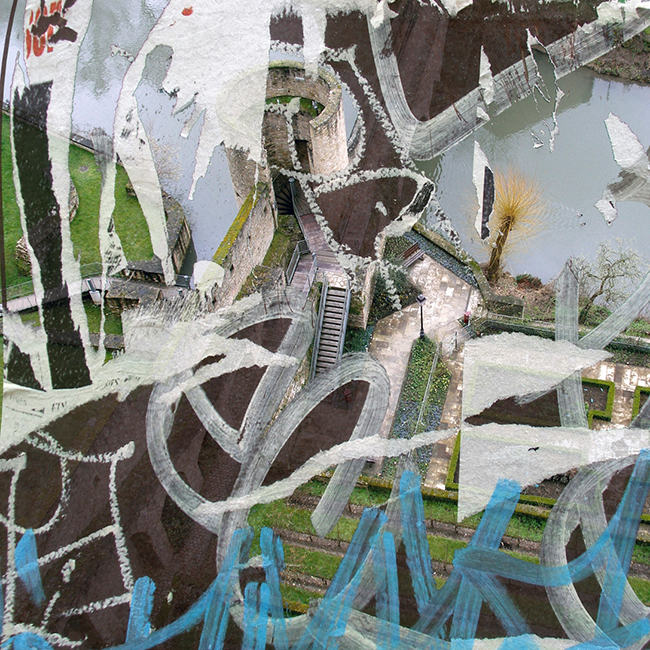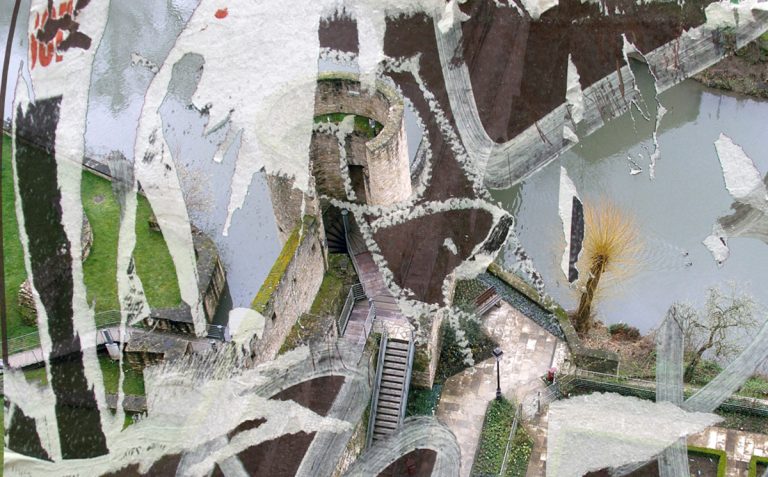Vicky Tsalamata, an Athens-based artist, weaves complex narratives into her printmaking. Her work echoes the timeless sentiments found in Honoré de Balzac’s “La Comédie Humaine,” blending sharp, sarcastic commentary with reflections on the human condition. Through her art, Tsalamata navigates the past and present, inviting us to consider our worth in the grand scheme of things.

More than just an artist, Tsalamata holds the title of Professor Emeritus in Printmaking at the Athens School of Fine Arts. Her artistic journey centers around mixed media techniques, often employing Archival Print on Photo Rag Hahnemuehle white 100% cotton art paper. This combination of traditional and modern methods allows her to create layered works that question reality, illusion, and human existence.
Expanded Printmaking: Utopian Cities
Vicky Tsalamata’s project “Expanded Printmaking” pushes the boundaries of traditional printmaking, blending it with photography and mixed media. One of the most intriguing parts of this project is the series titled “Utopian Cities.” These works are a part of a larger project called “Cityscapes.”

In “Utopian Cities,” Tsalamata constructs visual palimpsests—layered, textured compositions that merge urban imagery from her travels across Europe and China with remnants of previous intaglio work. Each piece is a blend of past and present, showing how urban environments evolve and decay. The cities depicted aren’t real but rather conceptual. They represent both the utopian ideal and the dystopian reality.
The process behind these works is intricate. Tsalamata uses details from matrices created during her intaglio printmaking—etched zinc and iron plates shaped by acid or fire. These matrices, often carrying the raw textures and marks left from past projects, are reimagined through her photographic lens. The selected textures and patterns are then transformed into new compositions, where light plays a key role in reinterpreting the original marks.

The photographic elements are not just visual aids; they serve as a new language within her printmaking research. The microcosm of the intaglio image—its grooves and textures—becomes a framework for creating new urban landscapes. These aren’t literal depictions of cities but abstract representations of how cities change and adapt over time. The labyrinth patterns from her earlier prints appear as aerial views, forming imaginary cityscapes that hover between real and surreal.
Cities as Symbols of Human Crisis
At the heart of “Utopian Cities” is a contemplation on the crisis of urban life. The cities Tsalamata presents are hybrids, where idealism and harsh reality coexist. There’s an ever-changing dynamic between what cities promise and what they deliver. She draws a parallel between the historical idea of a labyrinth and the modern city, where navigating one’s way through social and spatial chaos becomes increasingly difficult.
The cyclical journey within these cities mirrors our relationship with urban spaces—constantly shifting between hope and disillusionment. Tsalamata’s artistic approach seeks to understand cities from the outside in, gradually moving toward their core. This conceptual progression reveals how modern life reshapes the city’s essence while hinting at a deeper human struggle.
The Real and the Imaginary
Tsalamata’s “Utopian Cities” remind us of Italo Calvino’s “Invisible Cities.” Like Calvino’s poetic musings, Tsalamata’s works act as a visual love letter to urban spaces—celebrating their potential while acknowledging their challenges. The illusion within these prints is intentional, blurring the line between fantasy and reality.
In these prints, urban crises are not merely physical but metaphorical—representing the fragility of human connections and societal structures. As cities grow more complex and disconnected, Tsalamata’s work reflects on the loss of human intimacy within sprawling urban networks.
A Personal Exploration
What makes Tsalamata’s approach compelling is her personal connection to each piece. As she traverses cities around the world, she collects visual fragments, merging them with the tactile remnants of her previous works. It’s a process of rebuilding, where her past experiences are etched into new creations. Her cities are not static; they flow and evolve, much like the human stories they encapsulate.
In the end, “Utopian Cities” isn’t just a series about urban landscapes. It’s about the transient nature of human hope, ambition, and reality. Tsalamata challenges us to look beyond the obvious, to question what we perceive as ideal, and to reflect on the real essence of the spaces we inhabit. Her work transcends mere visual appeal—it provokes thought, nudging us to reconsider our place within the complex tapestry of modern life.


